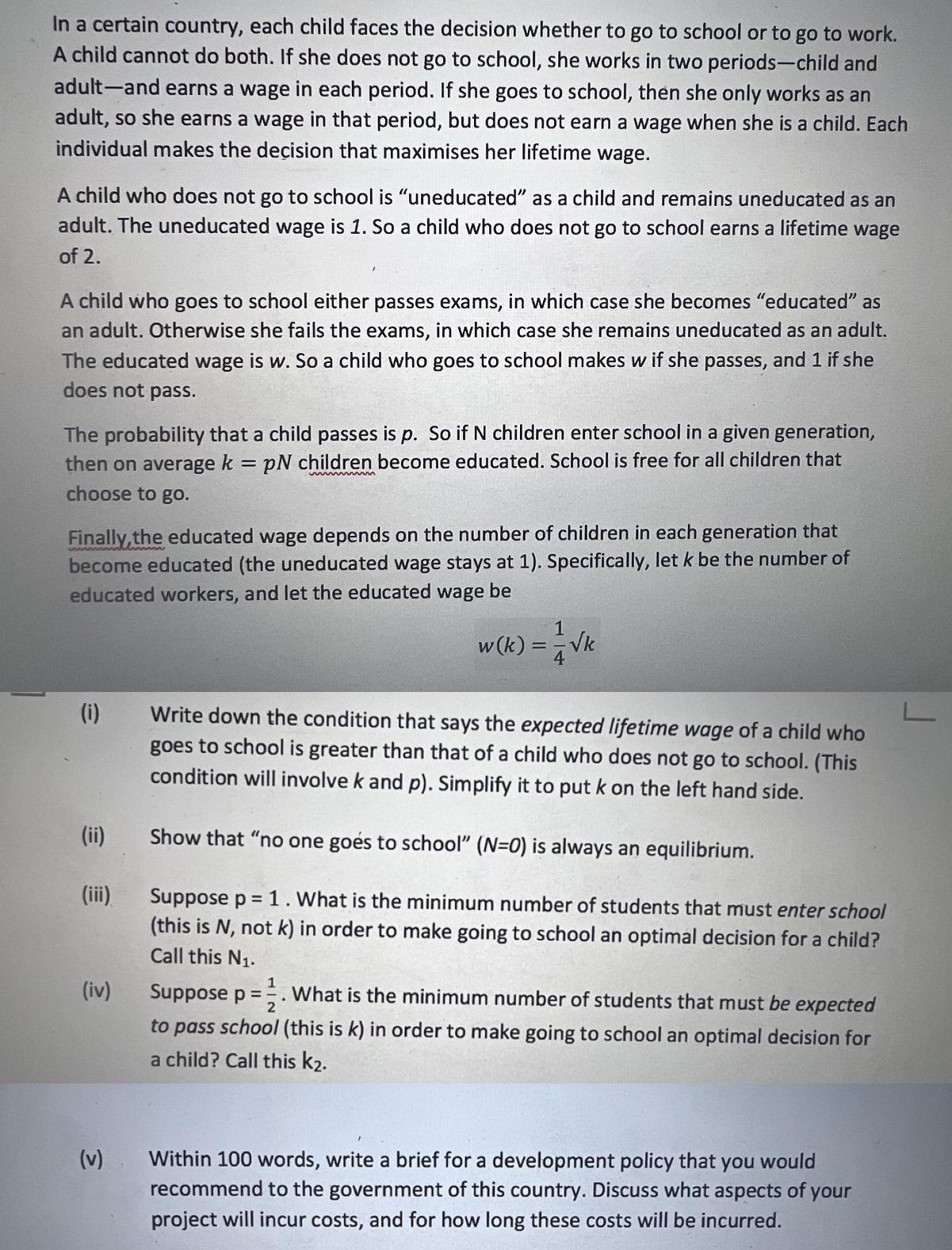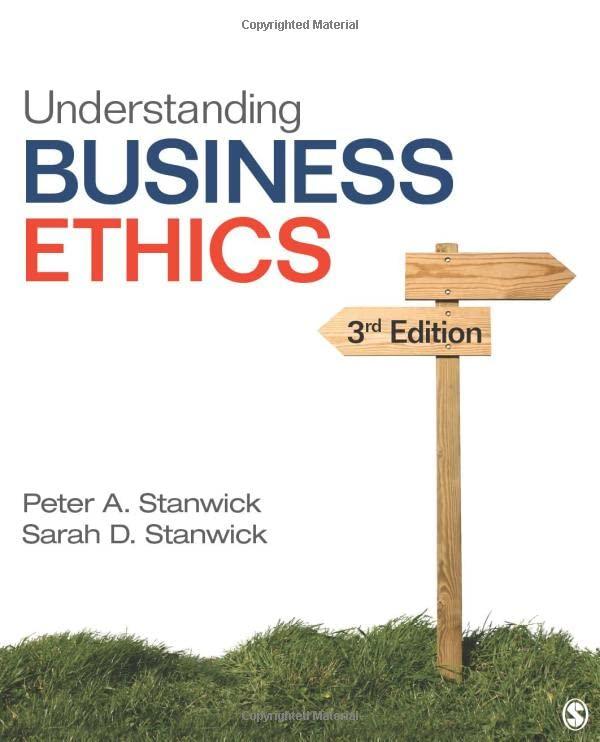Answered step by step
Verified Expert Solution
Question
1 Approved Answer
In a certain country, each child faces the decision whether to go to school or to go to work. A child cannot do both.

In a certain country, each child faces the decision whether to go to school or to go to work. A child cannot do both. If she does not go to school, she works in two periods-child and adult-and earns a wage in each period. If she goes to school, then she only works as an adult, so she earns a wage in that period, but does not earn a wage when she is a child. Each individual makes the decision that maximises her lifetime wage. A child who does not go to school is "uneducated" as a child and remains uneducated as an adult. The uneducated wage is 1. So a child who does not go to school earns a lifetime wage of 2. A child who goes to school either passes exams, in which case she becomes "educated" as an adult. Otherwise she fails the exams, in which case she remains uneducated as an adult. The educated wage is w. So a child who goes to school makes w if she passes, and 1 if she does not pass. The probability that a child passes is p. So if N children enter school in a given generation, then on average k = pN children become educated. School is free for all children that choose to go. wwwwww Finally, the educated wage depends on the number of children in each generation that become educated (the uneducated wage stays at 1). Specifically, let k be the number of educated workers, and let the educated wage be 1 (i) (ii) (iii) (iv) (v) w(k) = k Write down the condition that says the expected lifetime wage of a child who goes to school is greater than that of a child who does not go to school. (This condition will involve k and p). Simplify it to put k on the left hand side. Show that "no one goes to school" (N=0) is always an equilibrium. Suppose p = 1. What is the minimum number of students that must enter school (this is N, not k) in order to make going to school an optimal decision for a child? Call this N1. Suppose p = . What is the minimum number of students that must be expected to pass school (this is k) in order to make going to school an optimal decision for a child? Call this k. Within 100 words, write a brief for a development policy that you would recommend to the government of this country. Discuss what aspects of your project will incur costs, and for how long these costs will be incurred.
Step by Step Solution
There are 3 Steps involved in it
Step: 1
Answer i The condition that says the expected lifetime wage of a child who goes to school is greater than that of a child who does not go to school ca...
Get Instant Access to Expert-Tailored Solutions
See step-by-step solutions with expert insights and AI powered tools for academic success
Step: 2

Step: 3

Ace Your Homework with AI
Get the answers you need in no time with our AI-driven, step-by-step assistance
Get Started


